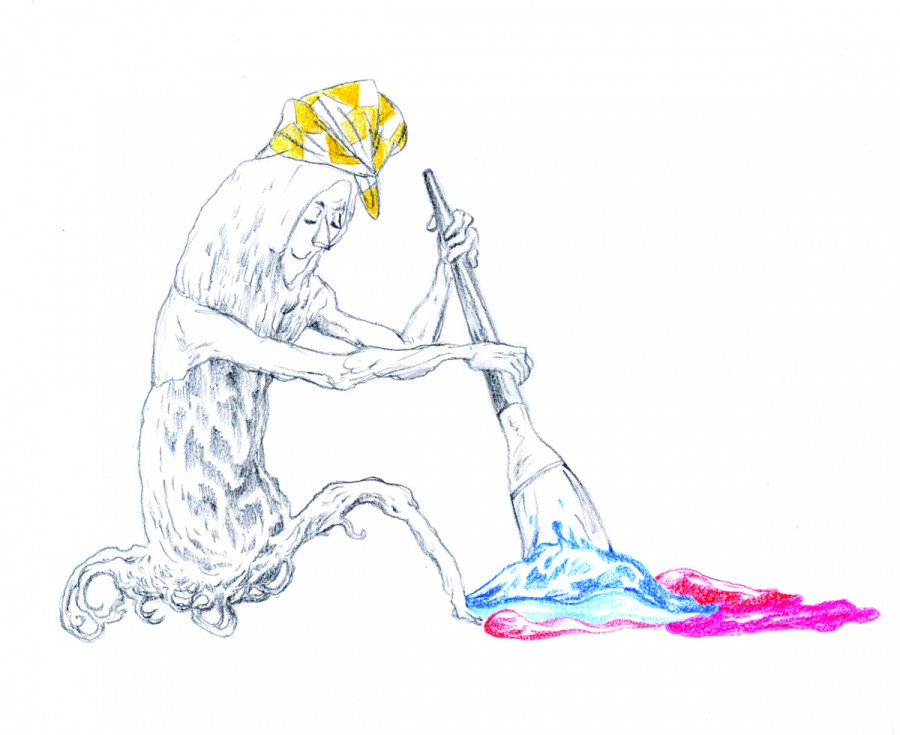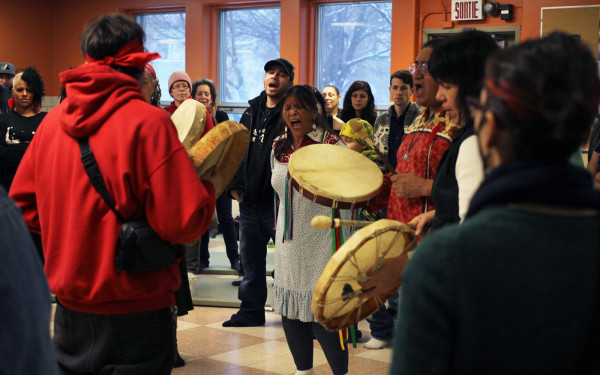Planting New Roots In Paint
‘Native Immigrant’ Art Exhibit Represents the Power of Displaced People in Canada
In 1986, Carolina Echeverría left Chile for Canada in search of the opportunity to follow her dream of studying art at Concordia, bringing with her a passion for social justice. But she quickly found it difficult to conform to what it meant to be an artist in Canada.
“When I left Chile, I really believed that to be an artist was to be a soldier. I had to fight for a cause—we were the tools of society, the canary in the coal mine,” she says.
“When I came here my experience of art was that art was for art’s sake and they couldn’t understand why I wanted to [fight for a cause].”
Refusing to accept the passive and purely aesthetic role of the artist, Echeverría has since used her art as her method of expressing social activist viewpoints.
“I don’t think that the experience of gazing [in art] has brought us anywhere and I think we’re living in the most repressive years ever as a society,” she said.
“I think as artists it’s our time to do something, because art is something that’s not suspect yet. I think that artists need to be taking that role of leading and showing the vision of where we want to get.”
The Untapped Power of People
With the second edition of her art exhibit Native Immigrant, opening Wednesday, Echeverría hopes to lead such a charge—specifically, helping immigrants to Canada discover their power and agency.
“I think that immigrants are not aware of the incredible political power they have here in Canada. We can totally create the future that we want and we just see ourselves as isolated,” she said.
“Look at what the Idle No More movement did. They gathered all the First Nations of North America into one group regardless of their differences […] and they found one common cause, which was to protect the land.
“I think if we joined them, we could all become a very powerful group of people that could actually have a say as to how we want to be living in this country,” she continued.
Echeverría says she sees many connections between the position of recent immigrants in Canada and that of First Nations peoples.
“It’s an unlikely pair but we’re both displaced,” she said. “Natives are displaced on their own land and immigrants are displaced by their own choice or the choice of life itself.”
She feels that if immigrants allow themselves to reject the foundations of colonialist ideologies and instead embrace those of this land’s First Peoples, they will find their home in this new land and welcome the opportunity to embrace it and nurture it.
“My project aims to join immigrants with First Nations so we can share and we can learn from their deep environmental knowledge,” she explained. “They know how to live in this land better than anyone else.”
To Echeverría, it’s important for immigrants to deeply establish themselves in their new home.
“I wish I could tell immigrants out there that they need to start re-rooting as fast as possible,” she said.
“Roots are not that important—people give too much importance to culture, roots, your origins. They don’t really matter, it’s irrelevant. What’s more important is what’s happening to the tree.”
She also emphasized the need to acknowledge and value the immigrant identity, and hopes to give this identity a face through her artwork.
“When we had the show in November a lot of people were seeing what they wanted to see. They said ‘Oh, this is so Mexican,’ or this is so this or so that, and they were all seeing parts of themselves there and I thought that was a real success,” she said.
But Native Immigrant won’t only feature art to be appreciated from afar—there will also be moments wherein exhibit-goers will be invited to help create the art.
“We will be doing two collaborative art pieces. One is ‘Native Immigrant Dress,’ which is a naked mannequin and we dress it with objects that immigrants bring and then we collect the native history of the stories behind the objects,” she explained.
“The second one is the ‘Charter of Immigrant Values’ […] where people write their values in a tongue-in-cheek kind of way. A lot of interesting conversations happen.”
Following the vernissage there will be an event to benefit Idle No More, in which artists and performers will contribute to raise money for the movement.
Native Immigrant // Feb. 26 to Mar. 5 // Complexe du Canal Lachine (4710 St. Ambroise St.) // 11 a.m. to 6 p.m. daily // Free admission


_600_832_s.png)


_600_375_90_s_c1.jpg)
_600_375_90_s_c1.jpg)
